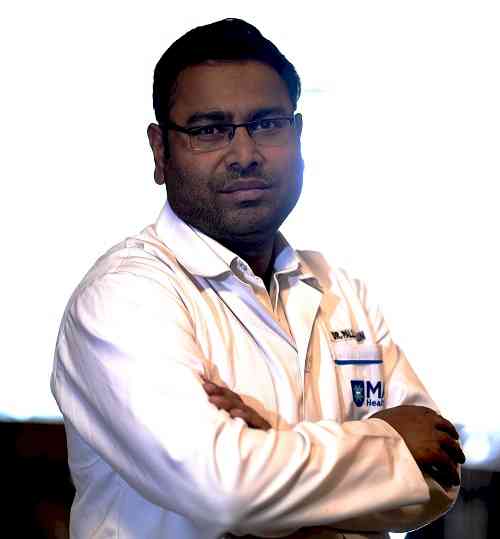Assessing How Sperm DNA Damage Affects IVF Pregnancy Risks
Infertility is becoming quite a common issue giving rise to Assisted Reproductive technology (ART). Well, though IVF (in vitro fertilization) is one of the most popular ART because of its success rate, does defective sperm DNA have an impact on the IVF procedure? Yes, it can raise pregnancy complications or the baby can be born with defects. Approximately 15% of all couples are affected by infertility, with a male factor being solely responsible in about 20% of couples and contributory in another 30–40%.

by Dr. Mohammed Ashraf C, Scientific Director - Embryologist, Milann Fertility Center, Bengaluru
Infertility is becoming quite a common issue giving rise to Assisted Reproductive technology (ART). Well, though IVF (in vitro fertilization) is one of the most popular ART because of its success rate, does defective sperm DNA have an impact on the IVF procedure? Yes, it can raise pregnancy complications or the baby can be born with defects. Approximately 15% of all couples are affected by infertility, with a male factor being solely responsible in about 20% of couples and contributory in another 30–40%.
While sperm DNA damage is broadly defined as any defect in sperm chromatin structure, sperm deoxyribonucleic acid (DNA) fragmentation (SDF) relates specifically to the single—or double-stranded breaks (SSBs or DSBs) within DNA strands. So, the high number of broken strands can increase the chances of developing preeclampsia in the mother and also increase the chances of early birth in case of IVF fertilization. Because to have a successful fertilization and embryo development it is important to have healthy sperm.
Before any ART procedure, the quantity, shape, and mobility of male sperm are typically assessed. Although the results could appear normal, problems could still arise. Potential sperm damage is identified by the DNA Fragmentation Index (DFI), which gauges the genetic material of the sperm's integrity and damage. It is thought to be an important metric for assessing the quality of semen. It is deemed healthy if the DFI is less than 15%. However, a DFI of 30% or above is regarded as severe SDF, and even 20% DFI for IVF raises problems like as preterm birth and hypertension in moms. Consequently, high DFI can lower the rates of live births, repeated pregnancies, clinical pregnancies, fertilization rates, and embryo quality. Now the question is, why does it happen?
A baby’s placenta is developed in the mother’s womb during pregnancy which helps provide nutrients and oxygen and removes waste. And, to surprise, half of the DNA of the placenta comes from the father’s sperm. So, fragmented sperm DNA can disrupt the functioning and formation of placenta causing high blood pressure in the mother during pregnancy.
Several potential causes, including varicocele, genitourinary tract infections, obesity, smoking, alcohol use, and environmental exposure, can lead to sperm deoxyribonucleic acid (DNA) fragmentation (SDF). These elements may cause the body's antioxidant and free radical balance to become out of balance, which could harm cells and tissues. Oxidative stress is the name given to this condition. Therefore, sperm DNA breakage may be a common result of oxidative stress.
Eggs can repair damaged DNA present in sperm until the embryo is fully developed, but mature sperm has limited ability. To note, the fixing quality of eggs reduces with aging.
Although SDF can harm normal or IVF pregnancies, still some strategies and habits can help to mitigate these challenges, including:
1. Adopting certain changes in lifestyle like quitting smoking, alcohol, and eating a balanced diet. Doing regular exercise, stress management techniques, etc can help to improve sperm quality and quantity.
2. Reproductive health especially in males is very much neglected. So, seeking help on time may help you to have solutions. Surgical Sperm Retrieval like TESA, PESA, and TESE are very prominent. Evaluation and treatment of voiding disturbances (urinary problems), etc.
(The Article represents the personal views of Author and represent his own opinion)


 City Air News
City Air News 







